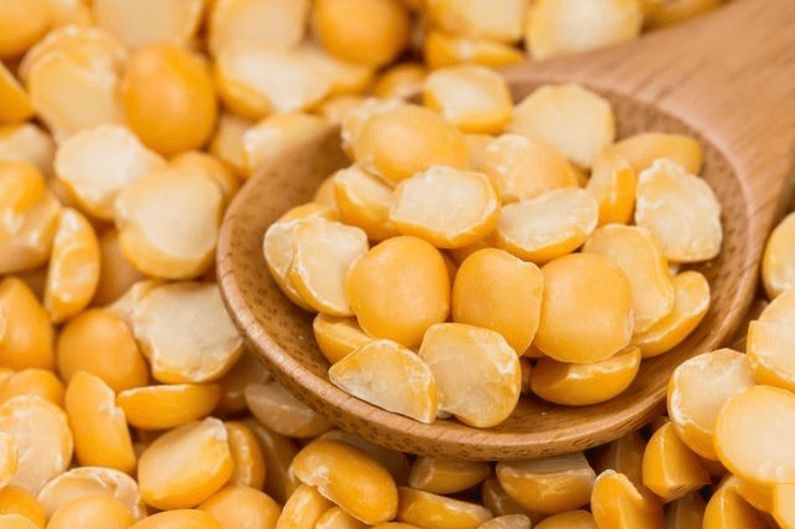Canada: Pea exporters fight for market share in China

Pulse Canada is in a dog fight in its top pea market.
“We are not sitting by idly and watching increased competition erode Canada’s market share,” said president Greg Cherewyk.
Russia gained access to the Chinese pea market in March 2023 and immediately usurped a 30 percent share of the business that calendar year.
“We have certainly felt the impact of Russian peas entering the Chinese market, primarily moving into the feed market for the time being,” he said.
“It’s unfortunate because we had spent many years really developing that feed market.”
The mounting competitive threat from Russia is one of the reasons Pulse Canada organized a trade mission to China in November 2023, its first since 2018 due to the global pandemic.
Russia isn’t the only looming competitive threat in Canada’s top market. China recently signed a phytosanitary protocol with Ukraine after three years of negotiations.
Cherewyk said Ukraine still has some hoops to jump through, such as getting individual export facilities registered by Chinese authorities, but it will soon be duking it out with Canada as well.
Ukrainian farmers harvested 400,000 tonnes of peas in 2023, a 48 percent increase over the previous year’s output, according to UkrAgroConsult.
That pales in comparison to Russia’s three million tonnes, but Ukraine’s main pulse commodity organization hopes the new agreement with China will provide the impetus for growers to plant more peas.
Until last year, Canada had a stranglehold on the Chinese market, supplying 95 to 97 percent of the country’s annual imports.
However, Cherewyk said it is tough to compete with Russian peas that are selling at a $30 to $50 per tonne discount to Canadian peas.
In years like this, when peas pencil into hog feed rations, China might import 2.5 to three million tonnes of the commodity, with half of that volume going to feed channels.
In years where they do not pencil in, China will import half of that total, with only a small fraction heading to the feed market for pigeons.
Canada still owns the food market for peas in China due to its superior quality, but importers warn that this is their first experience with Russian peas, and they believe the quality is bound to improve over time.
Cherewyk said that is why it is crucial that Canada continues to meet in person with Chinese customers and listen to their concerns about quality irritants such as “splits and brokens.”
Service is one area where Canada has been able to set itself apart from the competition.
“We know we have more information, more intelligence on how our products perform in a wide range of applications,” he said.
“We know more about the intrinsic quality attributes of our peas than other countries do, and that matters to companies that are manufacturing food.”
Cherewyk was curious if China’s pea protein processors would be focused on sustainability issues, like some other customers around the world.
“Almost without exception there was interest,” he said.
That is because almost all of China’s pea protein is exported to markets around the world, such as Japan and the European Union, where sustainability is a top priority.
It is also a priority for some of China’s more “forward looking” feed manufacturers.
That is another area where Canada has a competitive advantage over Black Sea peas because Canada has conducted a detailed lifecycle analysis on its pea production system.
Pulse Canada is exploring joint projects with China’s pea fractionators to explore the opportunity for boosting domestic demand in China for pea proteins in both the food and pet food markets.
It also took time during the trade mission to resurrect its 2018 market access applications for lentils, fababeans, chickpeas and adzuki beans.
Food companies in China have a growing interest in using a full range of pulse products due to the booming plant protein industry.
There appears to be particular interest in fababeans because of its high protein content and neutral flavour profile.
Cherewyk said there is a better chance of gaining the ear of the General Administration of Customs of the People’s Republic of China when Chinese importers are lobbying for the same thing.
Pulse Canada signed a memorandum of understanding during the trip with the China Chamber of Commerce of Foodstuffs and Native Produce, which represents key importers of Canadian peas.
The hope is it will assist Canada with its collaborative projects and market access issues.
Read also
Wheat in Southern Brazil Impacted by Dry Weather and Frosts
Oilseed Industry. Leaders and Strategies in the Times of a Great Change
Black Sea & Danube Region: Oilseed and Vegoil Markets Within Ongoing Transfor...
Serbia. The drought will cause extremely high losses for farmers this year
2023/24 Safrinha Corn in Brazil 91% Harvested
Write to us
Our manager will contact you soon



